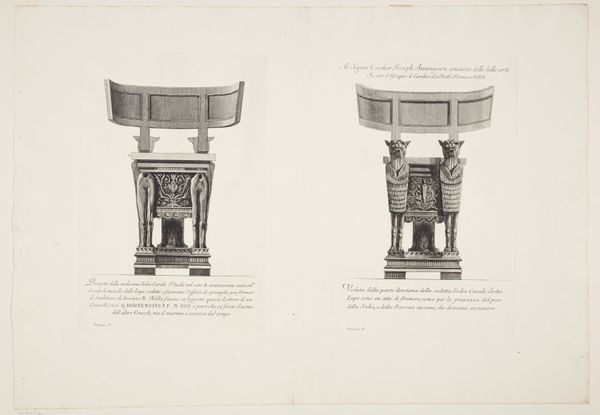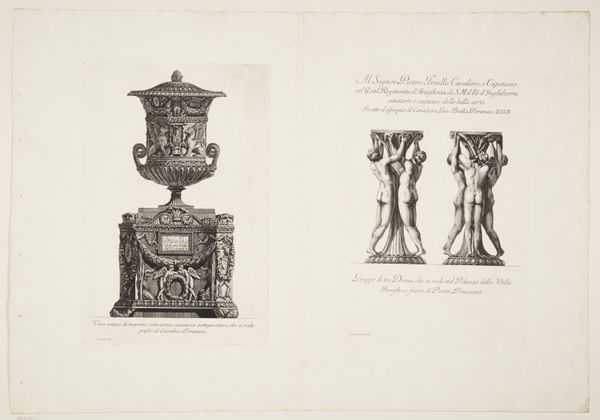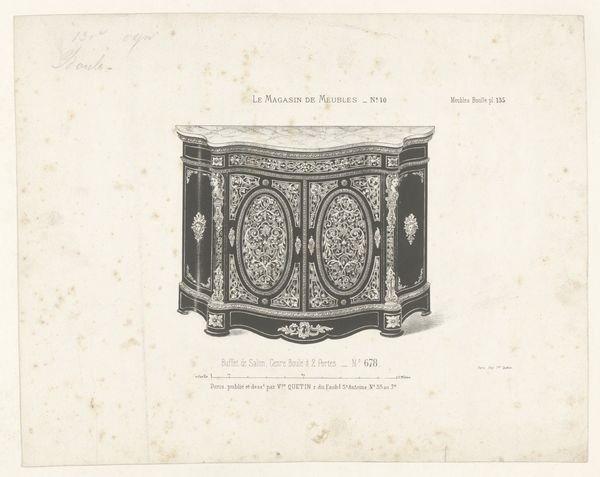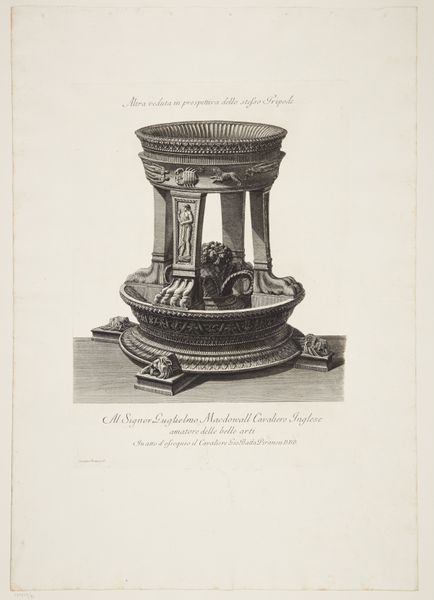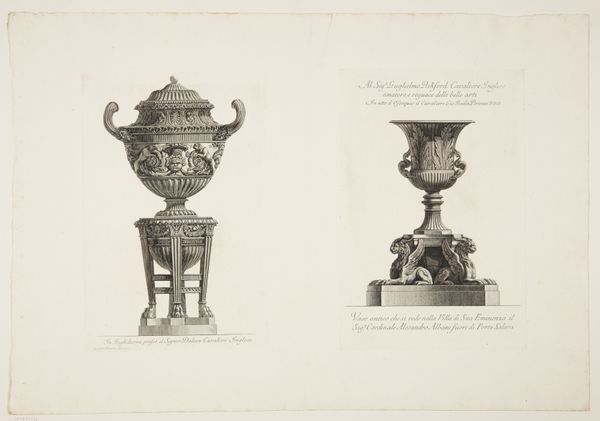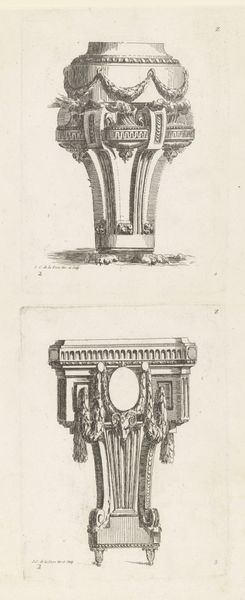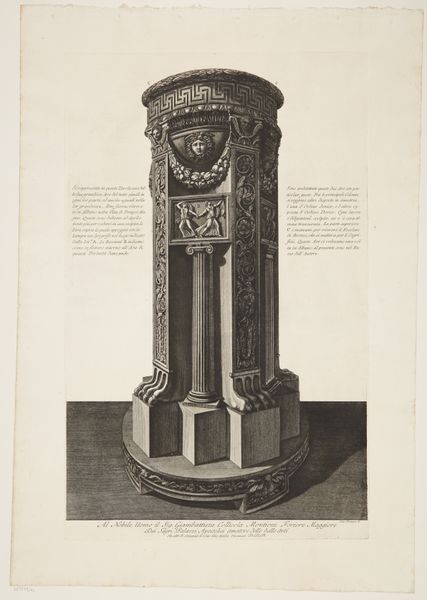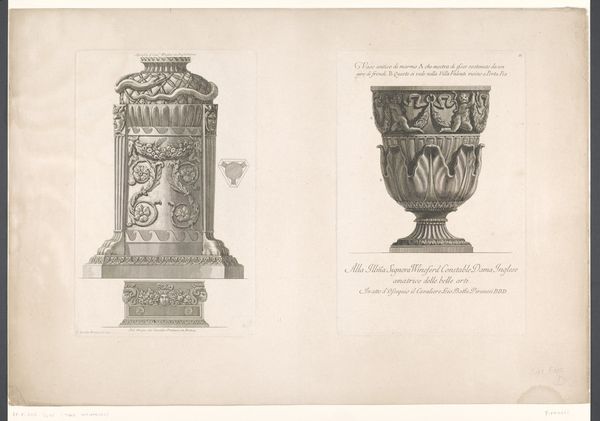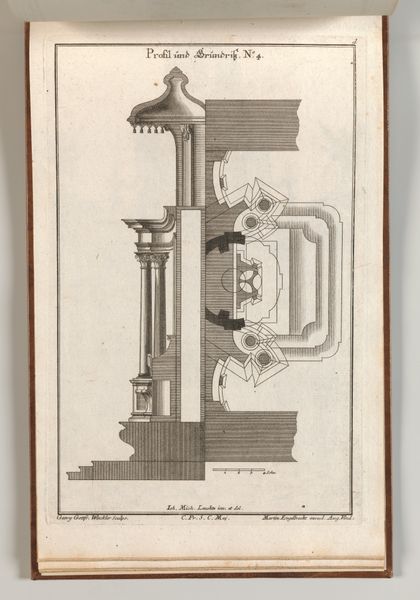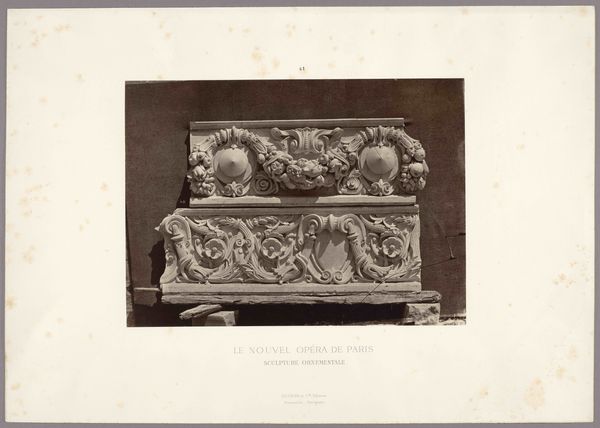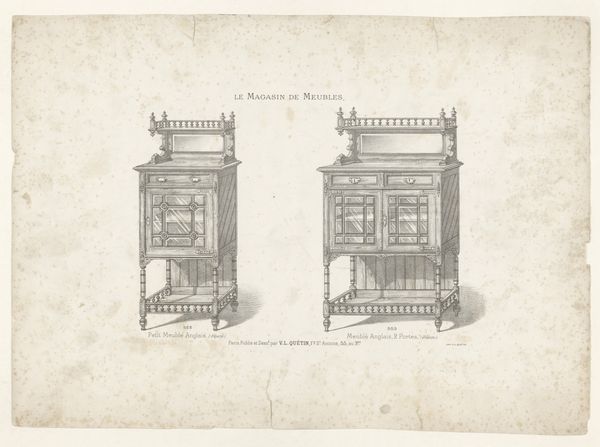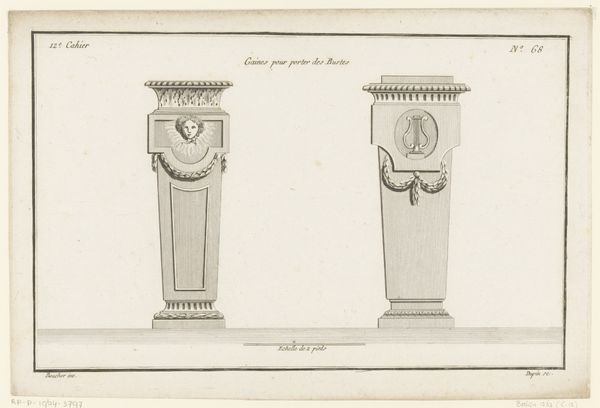
Marble altar decorated with friezes in relief and supported by chimeras at the base and cinerary urn supported on a bracket 1769 - 1778
0:00
0:00
drawing, print, metal, relief, marble, engraving, architecture
#
drawing
#
neoclacissism
# print
#
metal
#
relief
#
landscape
#
classical-realism
#
marble
#
engraving
#
architecture
Dimensions: 554 mm (height) x 794 mm (width) (bladmaal)
Giovanni Battista Piranesi rendered this marble altar and cinerary urn using etching, a printmaking technique that democratized images, spreading them far and wide. The precision and detail we see here speak to Piranesi’s skill with the etcher’s needle and acid bath, allowing for a photorealistic representation of marble. Note how the dense cross-hatching brings out the texture of the stone, making it almost palpable, contrasting the smoothness of polished surfaces against the rougher hewn areas. This is not just documentation; it is an act of interpretation. Through the printmaking process, Piranesi has imbued the artwork with new significance. He challenges the traditional hierarchy of art, elevating the status of printmaking as a medium capable of capturing the grandeur and detail of classical sculpture. The etching process itself, involving careful planning, precise execution, and multiple stages of development, reflects the labor and skill involved in the creation of both the original marble altar and its reproduction. By focusing on materials, making, and context, Piranesi invites us to reconsider traditional distinctions between fine art and craft.
Comments
No comments
Be the first to comment and join the conversation on the ultimate creative platform.
